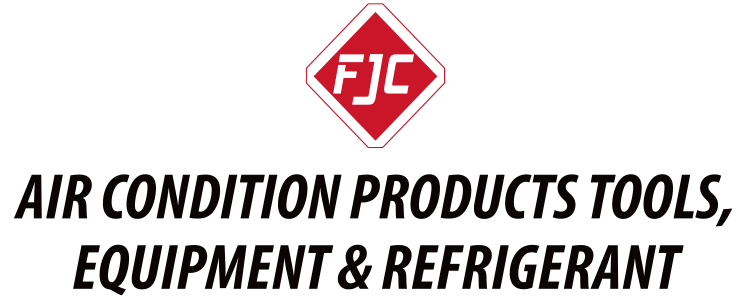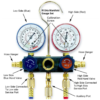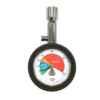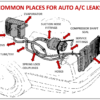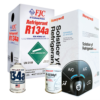Mobile A/C Leak Detection and Repair
Diagnosing an automotive A/C system that is not blowing cold air takes a multi-faceted approach. One of the most common problems causing a mobile A/C to blow warm, especially after a long winter or period of non-use, is a refrigerant leak. But how exactly does one determine if this is the actual issue?
(1) Always begin with a visual inspection. Refrigerant escapes the system as a colorless and odorless gas, so it is not visually detectable on its own. However, the refrigerant contains oil which is necessary to lubricate the compressor, so the presence of oil or an oily residue is a good indicator of a sizeable leak in your system. Any dirty or sticky areas on the A/C line or fittings is a good first indication that you may have a leak issue.
If your visual inspection yields no results, it is still very possible that you have a leak, albeit a smaller one. Smaller, invisible leaks are a much more common occurrence which allows refrigerant to slowly escape over a long period of time.
(2) To determine whether a small leak is the culprit for your under-functioning A/C system, try one of FJC’s UV Leak Detection Kits:
Part #4972 for R-12/R-134a or Part # 4972yf for R-1234yf. Both kits contain everything you need to perform leak detection, including fluorescent dye and a dye injector. After pushing the dye into the lines, use the included UV Safety goggles and UV light to look for traces of the dye.
(3) If you do have a minor leak, consider FJC’s Part #9164 or 9165, Kwik Seal Stop Leak. This product seals most leaks by creating a permanent seal in all metal and rubber components. This product is for use in R-134a systems only, and is not for use in hybrid vehicles.
(4) If your system is still not working properly after following these steps, you should bring it to a professional A/C tech for diagnosis/repair.

SAFETY:
· To be safe when servicing an A/C system, or handling refrigerant, be sure to wear safety goggles, gloves, and protective clothing at all times. Refrigerant can cause frostbite damage , do not allow it to make contact with skin or eyes.
· Proper ventilation or respiratory protection is required for any work done in an enclosed area if a leak is suspected. Although it may not be detectable, most refrigerants are heavier than air and will replace the oxygen in an enclosed area, causing loss of consciousness.
· Always use gauges to monitor the pressure of the system before adding any refrigerant to a system.
· Do not mix refrigerants.
LMK 2019

